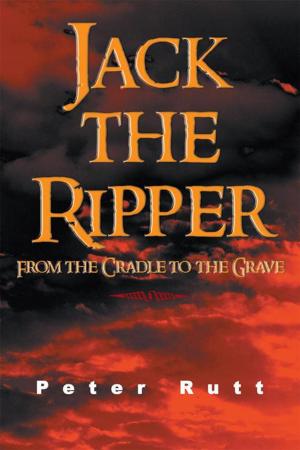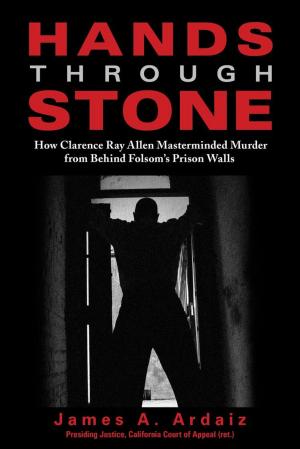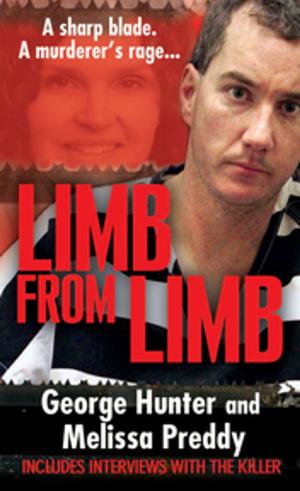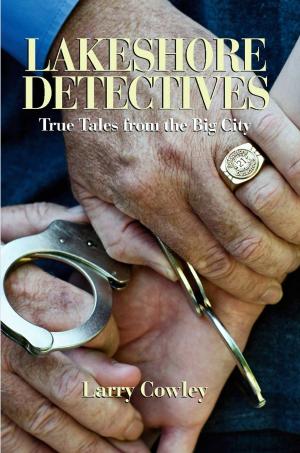The Unsolved Murder of Adam Walsh - Book Two: Finding The Victim
The body identified as Adam Walsh is not him. Is Adam still alive?
Nonfiction, Social & Cultural Studies, Social Science, Crimes & Criminals, Murder, True Crime| Author: | Arthur Jay Harris | ISBN: | 1230000193518 |
| Publisher: | Arthur Jay Harris | Publication: | January 19, 2016 |
| Imprint: | Language: | English |
| Author: | Arthur Jay Harris |
| ISBN: | 1230000193518 |
| Publisher: | Arthur Jay Harris |
| Publication: | January 19, 2016 |
| Imprint: | |
| Language: | English |
A TWO-BOOK SERIES
Six-year-old Adam Walsh disappeared from the toy department of a Sears in Hollywood, Florida, in 1981. Two weeks later and 125 miles away, a child’s severed head was found and identified as Adam. His parents, Reve and John Walsh, deeply grieved and dedicated their lives going forward to helping find other parents’ children who had gone missing. In 2008, 27 years later, police announced at a live televised press conference that they’d finally solved the case, blaming the kidnapping and murder on a by-then dead man. Because of that there could never be a trial.
All of that is true. But virtually everything else that you think you know about this famous case is wrong.
In 1983, 25 years earlier, that suspect had volunteered a confession that he’d killed Adam Walsh. But the police then had deeply investigated his story and couldn’t verify anything he’d said, not even that he’d been within 400 miles of the area. In 2008, when a new Hollywood Police chief closed the case, he admitted they had no new evidence.
What the new chief didn’t mention was that by then he had six separate police witnesses who’d been at the shopping mall on that day in 1981, and had since spoken up. Most had seen Adam; all had seen a much more likely suspect -- Jeffrey Dahmer. A microfilmed Miami police report the author found and had previously shown to the Walsh detectives proved that Dahmer was then living just a few miles from the Sears. Dahmer’s boss told the author that the prompt for the report was that Dahmer had told him he’d just found the body of a homeless man behind the store. Yes, bad luck, Jeffrey Dahmer found a dead body. 1981 was 10 years before Milwaukee police found severed heads in Dahmer’s refrigerator and arrested him as a serial killer. He said he’d killed his first victim in 1978.
Even worse, it turned out that the identification of the child as Adam had been slapdash and suspect. The Walsh parents weren’t present for it; John Walsh wrote years later that he’d never seen even photographs of the remains. A family friend had been present for the ID, and Walsh wrote that his first impression had been that it wasn’t Adam. Because the remains were only a severed head, there were no fingerprints, and forensic DNA was still years away. The pathologist making the identification did it strictly by teeth, but he admitted he wasn’t a dental expert. Dental X-rays, when available, are a standard for comparison, but he didn’t have them. He also had a forensic dentist available but never consulted him. A medical examiner in another regional office performed the autopsy, but he also never consulted a forensic dentist.
Worse again, that medical examiner never wrote and submitted an autopsy report, as state laws and guidelines require. That perhaps never happens. Had police ever charged any live defendant with murder in this case, prosecutors in court would have been handcuffed to prove that the dead child was Adam. The case likely then would have ended.
Why all the misdirection? Did Dahmer take Adam? Is Adam even dead, is that someone else’s child? Could Adam be… alive?
Fifteen years of continuing research. Author’s story appeared in 2007 on ABC Primetime, and in 2010 on a Sunday front page of The Miami Herald.
- “I never, and to my knowledge no one in the office, prepared a report on the head of Adam Walsh.”
-- 2010 email from Dr. Ronald K. Wright, in 1981 the Chief Broward County Medical Examiner, who performed the autopsy on the remains of the child previously identified as Adam Walsh, when asked if he had a personal copy of Adam Walsh’s autopsy report that neither the Medical Examiner’s Office nor the police had.
- “There’s no way in hell.”
-- A Florida forensic dentist, viewing the teeth in both the last picture of Adam Walsh and the remains of the child identified as him, responding to the question of whether they could be the same child. Other forensic dentists shown the same material agreed.
A TWO-BOOK SERIES
Six-year-old Adam Walsh disappeared from the toy department of a Sears in Hollywood, Florida, in 1981. Two weeks later and 125 miles away, a child’s severed head was found and identified as Adam. His parents, Reve and John Walsh, deeply grieved and dedicated their lives going forward to helping find other parents’ children who had gone missing. In 2008, 27 years later, police announced at a live televised press conference that they’d finally solved the case, blaming the kidnapping and murder on a by-then dead man. Because of that there could never be a trial.
All of that is true. But virtually everything else that you think you know about this famous case is wrong.
In 1983, 25 years earlier, that suspect had volunteered a confession that he’d killed Adam Walsh. But the police then had deeply investigated his story and couldn’t verify anything he’d said, not even that he’d been within 400 miles of the area. In 2008, when a new Hollywood Police chief closed the case, he admitted they had no new evidence.
What the new chief didn’t mention was that by then he had six separate police witnesses who’d been at the shopping mall on that day in 1981, and had since spoken up. Most had seen Adam; all had seen a much more likely suspect -- Jeffrey Dahmer. A microfilmed Miami police report the author found and had previously shown to the Walsh detectives proved that Dahmer was then living just a few miles from the Sears. Dahmer’s boss told the author that the prompt for the report was that Dahmer had told him he’d just found the body of a homeless man behind the store. Yes, bad luck, Jeffrey Dahmer found a dead body. 1981 was 10 years before Milwaukee police found severed heads in Dahmer’s refrigerator and arrested him as a serial killer. He said he’d killed his first victim in 1978.
Even worse, it turned out that the identification of the child as Adam had been slapdash and suspect. The Walsh parents weren’t present for it; John Walsh wrote years later that he’d never seen even photographs of the remains. A family friend had been present for the ID, and Walsh wrote that his first impression had been that it wasn’t Adam. Because the remains were only a severed head, there were no fingerprints, and forensic DNA was still years away. The pathologist making the identification did it strictly by teeth, but he admitted he wasn’t a dental expert. Dental X-rays, when available, are a standard for comparison, but he didn’t have them. He also had a forensic dentist available but never consulted him. A medical examiner in another regional office performed the autopsy, but he also never consulted a forensic dentist.
Worse again, that medical examiner never wrote and submitted an autopsy report, as state laws and guidelines require. That perhaps never happens. Had police ever charged any live defendant with murder in this case, prosecutors in court would have been handcuffed to prove that the dead child was Adam. The case likely then would have ended.
Why all the misdirection? Did Dahmer take Adam? Is Adam even dead, is that someone else’s child? Could Adam be… alive?
Fifteen years of continuing research. Author’s story appeared in 2007 on ABC Primetime, and in 2010 on a Sunday front page of The Miami Herald.
- “I never, and to my knowledge no one in the office, prepared a report on the head of Adam Walsh.”
-- 2010 email from Dr. Ronald K. Wright, in 1981 the Chief Broward County Medical Examiner, who performed the autopsy on the remains of the child previously identified as Adam Walsh, when asked if he had a personal copy of Adam Walsh’s autopsy report that neither the Medical Examiner’s Office nor the police had.
- “There’s no way in hell.”
-- A Florida forensic dentist, viewing the teeth in both the last picture of Adam Walsh and the remains of the child identified as him, responding to the question of whether they could be the same child. Other forensic dentists shown the same material agreed.















